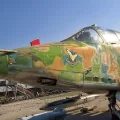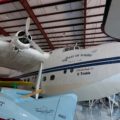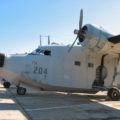
Morane-Saulnier MS.230 | |
|---|---|
| Country | France |
| Type | Elementary trainer |
| First flight | February 1929 |
| Built | 1000+ |
The Morane-Saulnier MS.230 aircraft was the main elementary trainer for the French Armée de l’Air throughout the 1930s. Almost all French pilots flying for the Armée de l’Air at the outbreak of World War II had had their earliest flight training in this machine. It was the equivalent of the Stearman trainer in the United States air services and the de Havilland Tiger Moth in the British Royal Air Force.
Source: Morane-Saulnier MS.230 on Wiki
| Morane Saulnier MS-230 Walk Around | |
|---|---|
| Photographer | Pavel Senk |
| Localisation | Unknow |
| Photos | 26 |
Related kits:

Find kits on eBay:
The Morane-Saulnier MS.230 was a French monoplane designed for elementary training and advanced instruction. It was built by Morane-Saulnier, a company founded by Raymond Saulnier and the Morane brothers, Léon and Robert. The MS.230 first flew in February 1929 and entered service with the French Air Force in 1930. It was also exported to several other countries, such as Belgium, Brazil, Greece, Portugal, Romania, Switzerland and Turkey.
The MS.230 had a parasol wing with an autostable profile and a metal tubular frame covered with fabric. The fuselage had a metal skin at the front and fabric at the rear. The cockpit accommodated two crew members in tandem, with dual controls for the instructor and the student. The landing gear was fixed and wide-tracked, with Dainhaut wheels equipped with brakes and shock absorbers. The powerplant was a nine-cylinder radial engine Salmson 9Ab producing 230 hp.
The MS.230 was praised for its robustness, ease of handling, stability and versatility. It could perform various roles such as target towing, glider towing, liaison and observation. It was also used as a testbed for different engines, skis or slats. It became the main trainer aircraft for the French Air Force until World War II, with more than 1,100 units produced. Some of them survived after the war and were used by civilian flying clubs or private owners.
Views : 231










